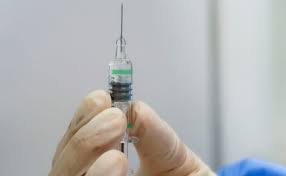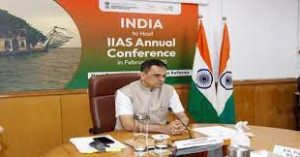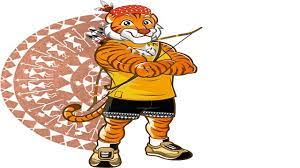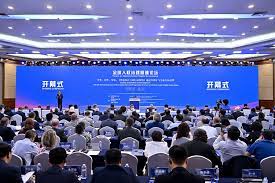Today’s Current Affairs: 16th Jun 2023 for UPSC IAS exams, State PSC exams, SSC CGL, State SSC, RRB, Railways, Banking Exam & IBPS, etc
Table of Contents
New Species Of Gliding Geckos In Mizoram:

Scientists recently discovered a new species of gliding geckos in Mizoram, named Mizoram parachute gecko.
- Mizoram parachute gecko is a newly discovered species of gliding geckos.
- The Mizoram parachute gecko, or Gekko mizoramensis, is one of the 14 geckos known to take to the air.
- It is thought that the species evolved as a result of being separated from its closest relative, G. popaensis, by the Arakan Mountains.
- Unlike other gliding reptiles, which use the bone to form their flying surfaces, these geckos have flaps of skin.
- When the lizards leap off a tall structure, air resistance pushes the flaps out to their full extent, much like a parachute, slowing the speed at which they fall.
- The skin flaps also help to break up their shape, acting as a camouflage against predators.
- Their specialised camouflage and body shape are shared by multiple species, making it hard to tell them apart from one another.
- Geckos are reptiles and are found on all continents except Antarctica.
- They are believed to be among the earliest evolving squamates, the group that contains all lizards, snakes and their close relatives.
- There are more than 1,200 species of gecko today, making up around a fifth of all known lizards.
- They have adapted to habitats from rain forests, to deserts, to cold mountain slopes.
INS Vikramaditya: Operationalised

INS Vikramaditya has recently been operationalised after an exhaustive refit lasting nearly two and a half years.
- INS Vikramaditya is a modified Kiev-class aircraft carrier which entered into service with the Indian Navy in 2013.
- It has been renamed in honour of Vikramaditya, a legendary emperor of Ujjain, India.
- The carrier served with the Soviet Navy and later with the Russian Navy (as Admiral Gorshkov) before being decommissioned in 1996.
- It was later bought by India in 2004 for $2.33bn.
- It was commissioned in 2013 after refurbishing.
- It has an overall length of about 284 meters and a maximum beam of about 60 meters.
- The ship has a total of 22 decks. It can carry more than 1,600 personnel, including crew.
- It has a maximum speed of more than 30 knots and can achieve a maximum range of 7,000nmi.
- It can endure up to 45 days at sea.
- It is powered by 08 new-generation steam boilers.
- The ship has the ability to carry over 30 aircraft comprising an assortment of MiG 29K/Sea Harrier, Kamov 31, Kamov 28, Sea King, ALH-Dhruv and Chetak helicopters.
- The aircraft carrier can be armed with a wide range of weapons, including anti-ship missiles, beyond visual range air-to-air missiles, guided bombs, and rockets.
- The ship is equipped with state-of-the-art launch and recovery systems along with aids to enable smooth and efficient operation of ship-borne aircraft.
Open Market Sale Scheme : Discontinued The Sale Of Rice And Wheat

The Central Government recently discontinued the sale of rice and wheat from the central pool under the Open Market Sale Scheme (OMSS) to State governments.
- Under OMSS, the Food Corporation of India (FCI) sells surplus stocks of wheat and rice at pre-determined prices through e-auction in the open market.
- Objective to enhance the supply of food grains, especially wheat, during the lean season and thereby moderate the open market prices, specially in the deficit regions.
- The FCI conducts a weekly auction to conduct this scheme in the open market using the platform of commodity exchange NCDEX(National Commodity and Derivatives Exchange Limited).
- The State Governments/ Union Territory Administrations are also allowed to participate in the e-auction, if they require wheat and rice outside the Targeted Public Distribution Scheme (TPDS) and Other Welfare Schemes (OWS).
- The reserve price is fixed by the government. In the tenders floated by the FCI, the bidders cannot quote less than the reserve price.
- The present form of OMSS comprises 3 schemes as under:
- Sale of wheat to bulk consumers/private traders through e-auction.
- Sale of wheat to bulk consumers/private traders through e-auction by dedicated movement.
- Sale of Raw Rice Grade ‘A’ to bulk consumers/private traders through e-auction.
Gender Social Norms Index (GSNI) 2023:

The United Nations Development Programme (UNDP) released the Gender Social Norms Index (GSNI) 2023.
- Gender Social Norms Index (GSNI) 2023 quantifies biases against women, capturing people’s attitudes toward women’s roles.
- It tracked people’s attitudes towards women in four dimensions: political, educational, economic and physical integrity.
- The index, covering 85 per cent of the global population, reveals that close to 9 out of 10 men and women hold fundamental biases against women.
- Nearly 90% of people still hold at least one bias against women and 25 per cent of people believe it is justified for a man to beat his wife.
- Countries with greater bias in gender social norms also show a lower presence of women in parliament.
- Indigenous women, migrant women and women with disabilities have meagre political representation, demonstrating how overlapping biases can further reduce opportunities for women.
- The recent increase in education achievements has not translated into better economic outcomes and opportunities for women.
Cholederm : Class D Medical Device

An advanced wound care product developed by the Sree Chitra Tirunal Institute for Medical Sciences and Technology (SCTIMST), named Cholederm, has won the approval of the Central Drugs Standard Control Organisation (CDSCO) as a Class D medical device
- Cholederm is a wound healing material derived from the extracellular matrix of the de-cellularised gall bladder of pigs and tissue engineered as membrane forms of a scaffold.
- It healed different types of skin wounds including burn and diabetic wounds in rats, rabbits or dogs etc. faster than similar products currently available in the market
- It is the first indigenously developed product to meet all regulatory requirements.
- The scaffold modulated the scarring reactions in subcutaneous, skeletal-muscle and cardiac tissues.
- It is the Central Drug Authority for discharging functions assigned to the Central Government under the Drugs and Cosmetics Act of 1940.
- It works under the Ministry of Health & Family Welfare.
Drugs Controller General of India (DCGI):
- DCGI is the head of the department of the CDSCO of the Government of India responsible for approval of licences of specified categories of drugs such as blood and blood products, IV fluids, vaccines and sera in India.
One-Shot Chikungunya Vaccine:

According to the first phase 3 trial of the preventive published in The Lancet journal – a single-dose vaccine (VLA1553 vaccine) for chikungunya was found safe and produced a strong immune response against the viral disease.
- Chikungunya is the mosquito-borne disease is caused by the chikungunya virus (CHIKV), which is endemic in some regions of Africa, Asia, and the Americas.
- Chikungunya causes symptoms such as fever, headaches, fatigue, and severe muscle and joint pain and there are no approved vaccines or antiviral treatments available.
- Chikungunya virus is spread to people by the bite of an infected mosquito.
- There is a risk the virus will be spread to unaffected areas by infected travelers.
- There is currently no vaccine to prevent or medicine to treat chikungunya virus infection.
2025 IIAS Annual Conference : India To Host

India recently decided to host the 2025 IIAS Annual Conference. This reflects India’s commitment to multilateralism, good governance, and administrative reforms.
- The IIAS (International Institute of Administrative Sciences), established in 1930, serves as a global federation dedicated to advancing administrative sciences.
- It comprises member states, national sections, and academic research centers, all collaborating to address contemporary policy challenges related to public administration.
- With its headquarters in Brussels, Belgium, IIAS plays a crucial role in fostering innovative and effective governance practices worldwide.
- The 2025 conference is set to witness the participation of 30 member countries, 18 national sections, and over 50 IIAS universities and institutes of public administration.
- Theme: ‘Next Generation Administrative Reforms – Empowering the Citizens and Reaching the Last Mile,’ the conference aims to explore strategies that enable citizen empowerment and ensure effective governance at all levels.
- India is gearing up to host two crucial summits in 2023—the G-20 Leaders’ Summit and the SCO Leaders’ Summit
Janjatiya Khel Mahotsav:

Prime Minister, Shri Narendra Modi has expressed happiness on the organization of the first Janjatiya Khel Mahotsav at the Kalinga Institute of Social Sciences, Bhubaneswar.
- The recently concluded Janjatiya Khel Mahotsav witnessed an incredible display of talent and sportsmanship as tribal athletes from across India came together to compete in various disciplines.
- Odisha emerged as the undisputed champion in the men’s and women’s divisions, cementing their stature as a sporting powerhouse.
- Janjatiya Khel Mahotsav witnessed the participation of 5,000 tribal athletes, representing 26 states across India.
- Karnataka showcased first runners-up position in the overall standings.
- Jharkhand showcased their talent as well, securing the second runners-up position, further adding to the excitement and intensity of the event.
- Janjatiya Khel Mahotsav not only celebrated sports but also served as a platform to promote tribal sports and unity.
- It provided an opportunity for athletes from diverse backgrounds to showcase their skills and foster a sense of camaraderie among the participating states.
30th Anniversary Of The Vienna Declaration And Programme Of Action:

This year marks the 30th anniversary of the Vienna Declaration and Programme of Action
- The Vienna Declaration and Programme of Action (VDPA) is a human rights declaration adopted by consensus at the World Conference on Human Rights on 25 June 1993 in Vienna, Austria.
- It affirmed the universality, indivisibility and interdependency of human rights.
- Vienna’s Right of self-determination to freely determine their political status, and freely pursue their economic, social and cultural development
- Fight against impunity, including the establishment of the International Criminal Court (ICC).
- The position of United Nations High Commissioner for Human Rights was recommended by this Declaration and subsequently created by General Assembly
- World Conference on Human Rights recommended that each State consider the desirability of drawing up a national action plan for the protection of human rights
UDHR (1948):
- The Universal Declaration of Human Rights (UDHR), adopted in 1948, sets out a common standard of human rights for people worldwide, regardless of their nationality, race, religion, or other status.
- It consists of two treaties i.e. International Covenant on Civil and Political Rights (ICCPR) and International Covenant on Economic, Social and Cultural Rights (ICESCR) adopted in 1966.
- Together with UDHR, ICCPR and ICESCR comprise the International Bill of Human Rights.




